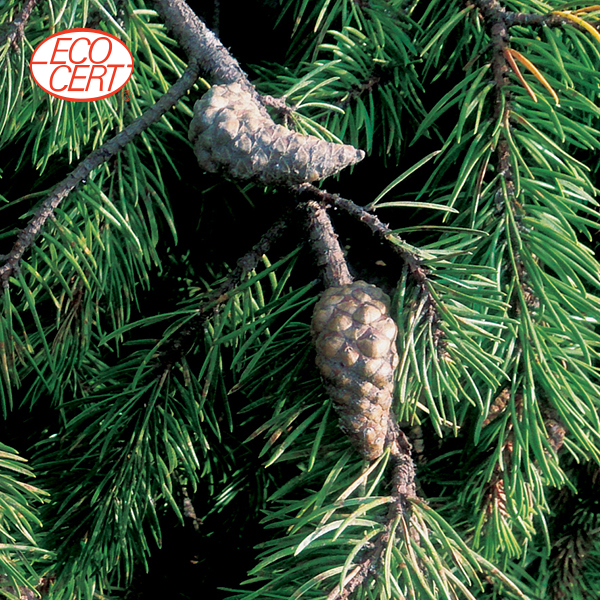JACK PINE HYDROSOL
The quality of a HYDROSOL
The quality of a hydrosol depends on the plant and the soil in which the plant grew. It also depends on the quality of the air, the climatic conditions during the growth of the plant, the precise time chosen to collect the plant, the waiting time before distillation and, of course, the quality of the water.
BoreA Canada is able to meet all these quality criteria thanks to its very favourable geographical location, in the heart of the wild boreal forest, far from homes and pollution and where the water, land and air are pure.

Latin Name: Pinus Banksiana
French Name: Pin Gris
English Name: Jack Pine
Familly: Pinaceae
Origin: Québec, Canada
Distilled Parts: Twings & Needles
ORIGIN
This native tree, also called ‘cypress’ in Quebec, without belonging to this family, can reach up to 20 meters in height. It grows in the boreal forests of Canada, especially in the province of Quebec, Ontario and the prairies. Preferring poor and sandy soils, it can live up to 150 years. Its branches are often twisted, sometimes moribund or even dead looking, which can give it a neglected appearance. Its thin bark, reddish-brown to gray at the beginning of its life, matures to a dark brown, scaly hue with thick and irregular plates, interspersed with furrows.
The oblong cones scattered all along the branches measure 4-5 cm and can remain attached to the tree for a long time, from 10 to 15 years, so that lichen has time to develop there. Its seed production begins after the age of 30 and reaches its full potential around the age of 70-80. Seeds in cones can survive up to 25 years. Finally, its short needles are grouped in pairs and form a covering around its twigs and branches.
The Jack Pine’s survival strategy is particularly ingenious. The seeds of the female cones are held in place by its sap, which bursts open only under the effect of high heat. Thus, during a fire, the seeds can disperse over a distance of up to 100 meters and can germinate within a period of about ten days. As a result, the Jack Pine takes advantage of this mechanism to invade more territory and as it grows rapidly during the first 20 years of its life, it is well suited to spreading this way. Its survival is therefore directly related to forest fires, because in the absence of intense heat the seeds will remain dormant. In the past, pioneers despised this tree and tried to get rid of it by setting fire to it… naturally, they ended up with an abundance of Jack Pine!
This species is vital to the survival of the endangered Kirtland’s Warbler. Indeed, these small birds nest exclusively in the pure stands of young Jack Pines. In addition, porcupines feasts on the cambium of this tree.
HISTORY
Native Americans used Jack Pin resin to caulk canoes, as well as the seams on the roof of wigwams. The roots, on the other hand, were strong enough to be use to sew the bark of their canoes. The inside of the bark was made into a poultice to treat deep cuts. A fumigation of needles was used to wake up people who had fainted and to decongest the lungs.
Recommendations: Essential oils and hydrosols are wonderful for the well-being of humans, animals, insects and plants. There are many books on the subject of aromatherapy and they should be referred to for the proper and safe use of essential oils and hydrosols. We also recommend that you consult an aromatherapy professional, who will be able to target the aromatic molecules of essential oils or hydrosols and their biochemical groupings, thereby increasing the effectiveness of your care.
The information provided on this website does NOT in any way constitute a recommendation for the care or treatment of any particular medical condition or disease.
We do not add any preservatives to our hydrosols, so they should be stored in a cool, dry place, away from light and air, in order to keep them for 1 to 3 years.

